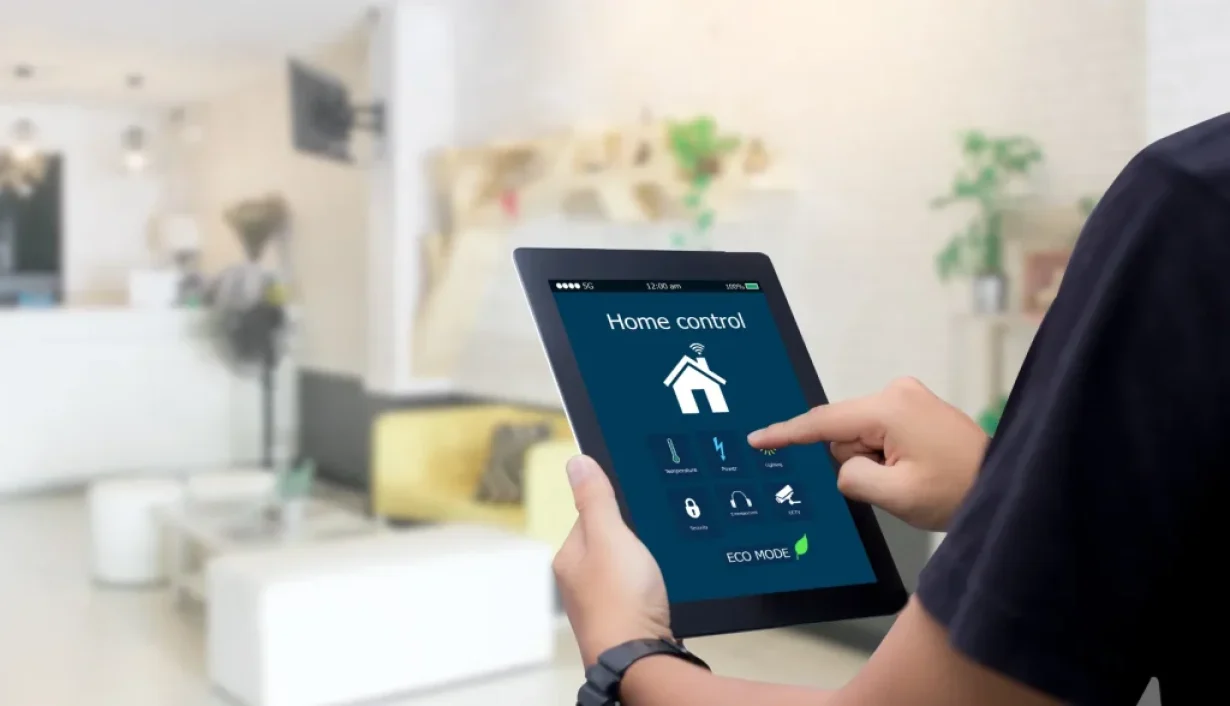
NFC technology is quietly revolutionizing how we interact with the world around us. Thanks to its fast, convenient, and low-power features, NFC tags have evolved from basic payment tools into versatile smart assistants in our everyday lives. Whether you’re controlling smart home devices, sharing information, making contactless payments, or managing access, NFC tags allow you to do it all with a simple tap, making life significantly easier.
In this article, we’ll delve deep into the core functionalities of NFC tags and showcase their widespread use across various scenarios. Let’s explore how these small tags open up a world of endless possibilities in such a straightforward way!
Basic Principle of NFC Tags
What is NFC Technology?
NFC, or Near Field Communication, is a short-range wireless communication technology that enables devices to exchange data through contact or close proximity. Similar to RFID (Radio Frequency Identification), NFC also uses radio waves to transmit information, but the key difference is that NFC operates over a much shorter distance, typically within 4 centimeters. Compared to Bluetooth, NFC doesn’t require a pairing process, and while its data transfer speed is relatively slower, its real advantage lies in its convenience and low power consumption, making it ideal for quickly exchanging small amounts of data.
Components of an NFC Tag
A typical NFC tag consists of three main components:
- Chip: This contains a built-in microprocessor and memory, responsible for storing data and communicating with external devices.
- Antenna: This receives and sends wireless signals, usually designed in a spiral or coil shape.
- Enclosure: This protects the chip and antenna from environmental damage, typically made of plastic, paper, or other materials. The enclosure can be customized for different applications, such as being waterproof or heat-resistant.
How to Communicate with Smartphones or Devices
NFC tags typically operate in a passive mode, meaning they don’t require a battery or external power source. The chip inside the tag only activates when it receives a signal from a device and sends the stored data back to it.
On the other hand, active NFC devices—like smartphones—can actively emit signals and communicate with passive NFC tags. Devices like smartphones can quickly recognize NFC tags without needing to make contact, greatly enhancing convenience and speed of operation.

The Versatility and Industry Applications of NFC Tags
NFC tags aren’t just about simplifying personal tasks; they’ve found extensive applications across various industries, delivering more efficient and smarter solutions. From everyday tasks to complex business applications, NFC tags demonstrate their vast potential in numerous fields.
NFC Applications in Daily Life
Automating Tasks: With their one-touch functionality, NFC tags can automatically connect to Wi-Fi networks, Bluetooth devices, or launch specific apps, saving you from tedious manual operations.
Smart Home Control: By placing NFC tags around your home, users can easily control lights, adjust temperature settings, or play music with a simple tap, making smart home automation effortless.
Digital Business Cards and Social Sharing: Storing personal information on an NFC tag allows for easy exchange of contact details or social media accounts with just a tap, eliminating the need for paper business cards—this is both eco-friendly and efficient for social interactions.
Mobile Payments and Access Control: NFC tags are widely used for mobile payments and access management, enabling quick transactions or unlocking doors with a simple tap, enhancing both convenience and security.
Information Access and Sharing: NFC tags can store URLs, e-docs, or coupons, allowing users to access information with just a touch, resulting in a more convenient and paperless interaction.
Industry-Specific NFC Application Cases
Retail and Marketing: In retail, NFC tags can be embedded in smart billboards or product packaging, enabling customers to tap their phones to get product info or coupons, enhancing engagement and shopping experiences.
Healthcare and Wellness: In healthcare, NFC tags can be used for patient identification, accessing electronic medical records, or medication reminders, helping healthcare workers provide personalized services more efficiently.
Enterprise and Office: In business settings, NFC tags can facilitate attendance tracking, visitor registration, and contactless meeting check-ins, improving work efficiency and elevating smart office management.
Automotive and Transportation: The use of NFC technology in transportation is also on the rise. Applications like smart car keys, cashless toll systems, and quick payment at gas stations are making travel smoother and more convenient.
Conclusion
NFC tags are transforming our daily lives and how industries operate, thanks to their convenience, intelligence, and versatility. Whether you’re streamlining everyday tasks or boosting efficiency in business operations, NFC technology offers innovative solutions.
So, let’s embrace the endless potential of NFC technology. We need to integrate it into every aspect of our personal and professional lives to make our lives easier and our work more efficient. Meanwhile, businesses and developers should keep an eye on the innovative uses of NFC technology to stay ahead in this smart development wave and drive the changes of the digital age together.

FAQs
What’s the difference between NFC technology and RFID?
NFC and RFID are both wireless technologies, but they operate at different frequencies, ranges, and in different scenarios. NFC operates at 13.56 MHz with a short range—usually no more than 4 centimeters—making it ideal for close-range interactions. RFID, however, covers a wider frequency range, including low frequency (125 KHz), high frequency (13.56 MHz), and ultra-high frequency (860-960 MHz), allowing it to work from farther away—up to several dozen meters with ultra-high frequency—which makes it better suited for logistics and warehousing. Additionally, NFC allows for two-way communication, enabling data exchange, while RFID primarily transfers information in one direction.
Can you reuse NFC tags?
Absolutely! You can reuse NFC tags, especially programmable ones. You can update the information stored on them as needed, such as changing a URL, documents, or other data. This reprogrammability makes NFC tags highly flexible and perfect for various smart applications and marketing campaigns.
Do I need to install a special app to use NFC tags?
Most smartphones, especially Androids and some NFC-compatible iPhones, come with built-in NFC, so you can read information from NFC tags without any additional apps. You can perform basic tasks like visiting websites or exchanging business cards with just a tap. However, for certain features, such as programming tags or accessing specific app services, you might need to download an NFC-supporting app.

RFID Antenna UHF
15-Meter Cable for UHF RFID Fixed Reader
UHF Tag
4″x2″ 860-960MHz UHF RFID Label RFID M4D
UHF Tag
4″x4″UHF RFID Label Alien H3 | ISO18000-6C
RFID Antenna UHF
5-Meter Cable for UHF RFID Fixed Reader
HF Card
ABS RFID KEY-FOB Tag RFID Classic 1K
HF Card
ABS RFID KEY-FOB Tag RFID Classic 4K
HF Card
ABS RFID KEY-FOB Tag RFID Ultralight C
HF Tag
ABS RFID KEY-FOB Tag RFID Ultralight EV1
LF Card
ABS RFID KEY-FOB Tag ATA5577
LF Card
ABS RFID KEY-FOB Tag EM4200
HF Card
ABS RFID KEY-FOB Tag EM4305
HF Card
ABS RFID KEY-FOB Tag RFID TAG 213